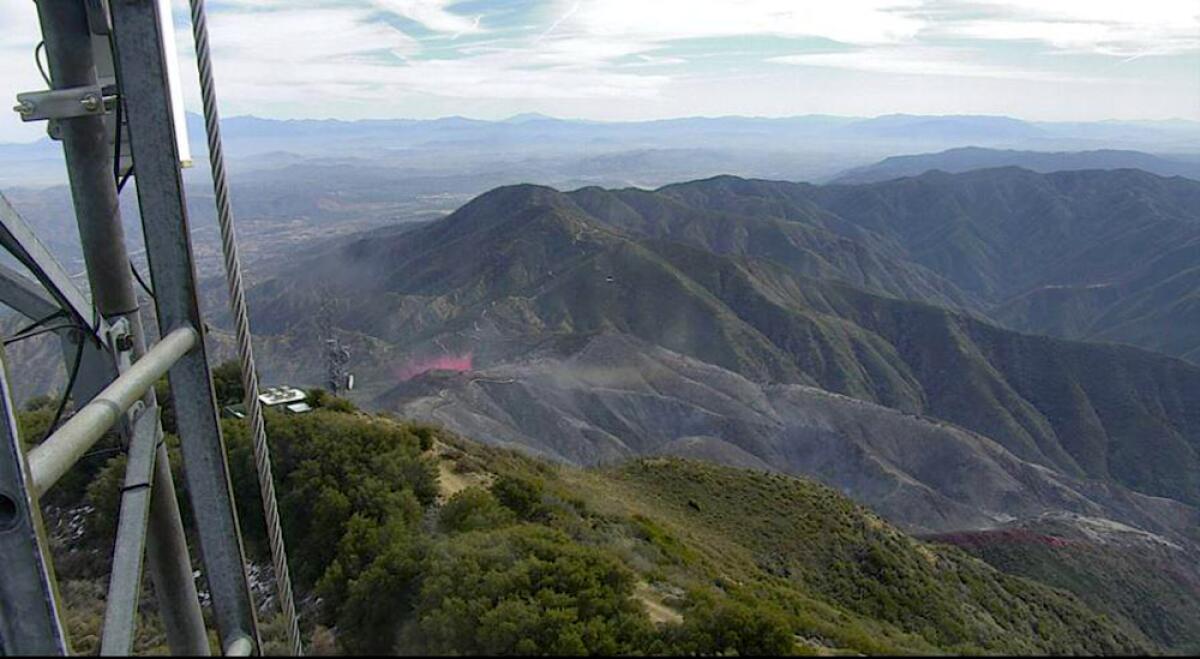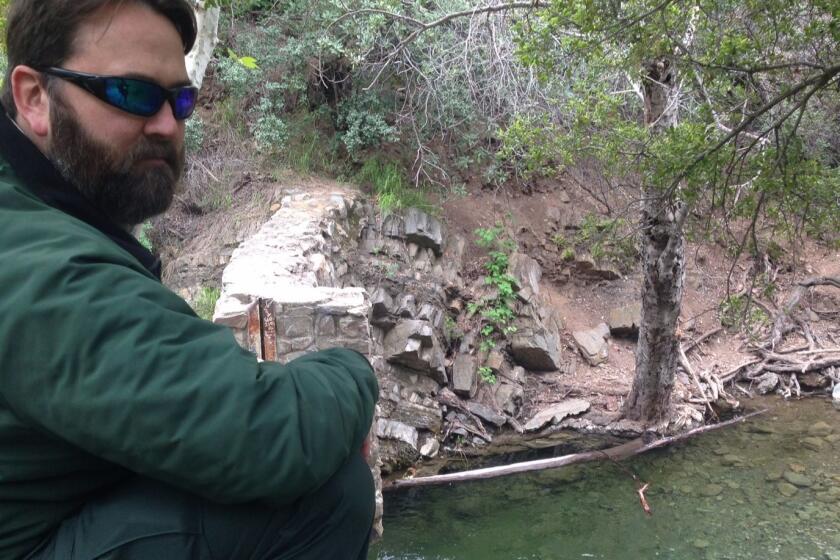Jim fire 60% contained; explosives probed as possible cause

- Share via
Marine engineers from Camp Pendleton were detonating explosives in the Cleveland National Forest around the time of the Jim fire’s ignition Wednesday morning, authorities have confirmed.
The fire, which has been burning for two days inside the forest near the Riverside-Orange County line, was 60% contained and holding at 553 acres Friday evening.
Rainfall in the area Friday helped, extinguishing any smoldering areas. The light precipitation did not result in any high-volume runoff.
The official cause of the fire remains under investigation. Cleveland National Forest Service spokesman Nathan Judy acknowledged that crews were in the forest around the time of ignition.
“We did have crews working in the area — there is a project going on back in there — but the cause is still under investigation,” he said.
In a daybreak showdown Tuesday, more than a dozen Silverado Canyon residents and environmentalists gathered at a blockade of about 20 Orange County sheriff’s deputies, some with police dogs.
The blasts were part of a dam removal operation conducted by the U.S. Forest Service, the Marine Corps and other federal agencies aimed at restoring wildlife habitats in the forest, as first reported by the Desert Sun.
A Camp Pendleton spokesman Friday confirmed that teams were in the area.
“U.S. Marines with 7th Engineer Support Battalion, 1st Marine Logistics Group along with United States Forestry Service personnel were operating in the Cleveland National Forest March 2 at the time of the wildfire outbreak,” Capt. Charles Palmer said in a statement. “All personnel were moved safely out of the area once the outbreak was identified.”
In 2017, the dam removal project drew fervent opposition from local residents and conservation groups who feared demolition would clog creeks with debris, kill aquatic wildlife and wipe out popular swimming holes.
The project targets 81 dams for removal, according to a Forest Service environmental assessment, which says removing the barriers is a “key component to restoring stream health and function” for native species like steelhead trout.
Palmer said the battalion has conducted similar operations over the last few years with and at the request of the Forest Service “to enhance aquatic organism passage and stream habitats in several areas of the forest.”
“The operations involve removal of manmade dams in these creeks to support native aquatic species and provide suitable habitat for potential reestablishment of extirpated species,” he said.
The Jim fire sparked around 11:20 a.m. in the Holy Jim Canyon area of the forest and quickly spread uphill, mushrooming from 10 to 400 acres in its first three hours.
No homes were threatened by the fire and no evacuations were ordered, officials said.
The fire started toward the end of a warm weather streak and seared through dried vegetation that hasn’t seen much moisture this year. The months of January and February were the driest ever recorded in California.
The National Weather Service said its closest monitoring station to the fire, which is at a lower elevation than where the blaze is burning, recorded a scant 0.21 inch of precipitation in January and February, compared with the normal amount of about 6 inches.
Judy said the grasses were moist on Wednesday, but larger fuels, such as trees, were drier. The fire danger Wednesday was classified as “moderate,” he said.
The conditions helped fuel a second wildfire in the forest that ignited Thursday but was quickly controlled.
Dubbed the San Juan fire, it sparked around 12:15 p.m. off State Route 74 near Sievers Canyon and grew to about 9 acres.
As of Friday, it was 90% contained. The cause of that fire also remains under investigation.
Judy said about 90 personnel were still assigned to the Jim fire on Friday evening, with hand crews and bulldozers laying containment lines on the ground and helicopters dropping water from above.
Meanwhile, in Northern California, a fire broke out Friday morning near the city of Shasta Lake, prompting mandatory evacuation orders. Crews were making good progress on the Flanagan fire, which was at 40 acres and 20% contained by Friday evening.
Times staff writer Christian Martinez contributed to this report.
More to Read
Sign up for Essential California
The most important California stories and recommendations in your inbox every morning.
You may occasionally receive promotional content from the Los Angeles Times.












